
I found this article in the net and I would like to critique this paper, written by Hope Sabanpan-Yu, a short story writer/poet from Cebu City Philippines, with a Ph.D. in Comparative Literature from the University of the Philippines, and now connected with the University of San Carlos in Cebu City, Philippines.
This paper was written for the XXII International Congress of FILLM held at Assumption University, and is part of a book, Re-imagining Language and Literature for the 21st Century, published in 2005.
Dr. Yu has made me and another Filipina American novelist, Jessica Hagedorn, her subject matter, focusing on my novel When the Rainbow Goddess Wept and Hagedorn’s novel, Dogeaters.
Dr. Yu’s paper sets out to answer questions of whether an immigrant, such as Hagedorn and myself, can speak on behalf of the Filipino people. She questions whether we can depict an authentic Philippines, “after years and years of being away.” Further she questions whether I – “a highly-educated woman from an upper-class Philippine family” know anything about the situation of the Filipino people. Dr. Yu concludes that Hagedorn and I “cannot know enough to represent the common Filipino.”
Quoting an online critic (Balce-Cortes) of Hagedorn and me, Yu goes on to say, “Their works (Hagedorn’s and mine) have been perceived by Filipino critics as “a racist and fetishistic” exoticizing project to gain “acceptance into the U.S. Literary mainstream.” Dr. Yu fails to mention these Filipino critics, however, relying solely on a statement by Balce-Cortes which Dr. Yu found in the internet.
Dr. Yu continues with her sweeping statements, without documentation, as when she says, “Many critics take offense at Brainard’s portrayal of the Philippines.” Dr. Yu does not mention these critics; she does not quote them. She does quote one other critic, Hidalgo. Basically Dr. Yu has used two Filipina critics as her sources, despite the number of critical studies made on When the Rainbow Goddess Wept, including a well-lauded essay by Leonard Casper and numerous book reviews by Booklist, Publishers Weekly, Los Angeles Times, and many more.
While Dr. Yu has lumped Hagedorn and me together as guilty of orientalising and being fetishistic, she takes a position that Hagedorn is “seldom accused of being unfair to the Filipinos, “ but “Brainard is lambasted… because she fails to make a balanced representation.” Again, this position is not supported by any sound research. Who has lambasted me? Who has accused me of being unfair to the Filipinos? Are these Dr. Yu’s personal conclusions? And based on what? She does not know me. Her statement that I have been away for “years and years” from the Philippines is incorrect; I visit the Philippines regularly, sometimes twice a year. It is unfortunate that Dr. Yu did not bother emailing me, and she might have learned that I am very much in touch with Philippine-matters.
 While Dr. Yu does mention some interesting ideas by Faoucalt and Bhabha about authorship and immigrant writers, Dr. Yu’s paper comes across as one that has been cut-and-pasted by someone who did not do proper research and who had to resort to sweeping statements and conclusions based on meager and false information. Aside from using unreliable sources, Dr. Yu clearly lacks knowledge of fiction writing. And indeed her bio in Wikipedia mentions some three publications for her poems, nothing for her fiction. Someone who knows fiction writing would understand that the fiction writers’ responsibility is to write a good story, not to represent all 90 million Filipinos, nor solve all the ills of Philippine culture and society. Someone so knowledgeable would know about fiction elements such as “voice” and “point of view” – points carefully discussed by noted critic, Leonard Casper in his critical essay about Song of Yvonne also known as When the Rainbow Goddess Wept (see Jan. 1 blog entry).
While Dr. Yu does mention some interesting ideas by Faoucalt and Bhabha about authorship and immigrant writers, Dr. Yu’s paper comes across as one that has been cut-and-pasted by someone who did not do proper research and who had to resort to sweeping statements and conclusions based on meager and false information. Aside from using unreliable sources, Dr. Yu clearly lacks knowledge of fiction writing. And indeed her bio in Wikipedia mentions some three publications for her poems, nothing for her fiction. Someone who knows fiction writing would understand that the fiction writers’ responsibility is to write a good story, not to represent all 90 million Filipinos, nor solve all the ills of Philippine culture and society. Someone so knowledgeable would know about fiction elements such as “voice” and “point of view” – points carefully discussed by noted critic, Leonard Casper in his critical essay about Song of Yvonne also known as When the Rainbow Goddess Wept (see Jan. 1 blog entry).In any case, I would like to thank Dr. Yu and the editors for continuing the dialogue about When the Rainbow Goddess Wept, me, my work, and Philippine literature in general.
-end comments by Brainard-
Article by Hope Saban-pan Yu begins:
Representation in Philippine American Women Writers:
Between Authenticity and Orientalism
By Hope Saban-pan Yu, University of Calgary, Canada
(From the book, Re-imagining Language and Literature for the 21st Century, edited by Suthira Duangsamosorn (et al), published by International Federation for Modern Languages)
Can an American know the heart of a Filipino? Can a writer speak on behalf of her people? For whom does she speak? This question of representation besets immigrant writers the world over. Whenever they write, they are believed to be representing someone. Toni Morrison in “Paradise Found” for instance, talks of having to answer sociological and political questions during book reading, instead of queries that address literary concerns (Gray 65). What should the roles of writers be given their positions of power and responsibility?
Filipino writers who have made America their home like Cecilia Manguerra Brainard and Jessica Hagedorn are faced with the same questions. Should they depict the Philippines the way they see it now, after years and years of being away? Can they speak on behalf of the Filipinos? Occupying such controversial positions, these writers are read by Filipinos and Americans alike and are judged on the basis of how well they represent the Philippines. While one is praised for sympathetically portraying her subject, the other is condemned for criticizing the Philippines. A closer study though, reveals that neither Brainard nor Hagedorn, nor any Filipino immigrant writer writes from a purely Philippine perspective. They fail to come up to the immigrants’ expectation of representation.
Having been observed and analyzed by the Spaniards then the Americans, the rest of the world has read and heard their views. Filtered through their eyes, the Philippines became a country “nearly a successful replica of the United States-except that its citizens are mostly dark-skinned, poor, ostensibly ‘Roman Catholic’ in faith” (San Juan 5-6). The Filipinos were thought friendly and hospitable, but not necessarily ambitious. Masterpieces like the Banaue Rice Terraces are praised for their uniqueness but for all the agricultural accomplishment, the Philippines is still perceived as a backward country. Occasionally on television, men are seen coming home from fishing and counting out the day’s meagre earnings. They smile, the only positive bent in which the Filipino is perceived. The Philippines, famed pearl of the Orient, rich in natural resources, home of friendship and hospitality, is today a land of corruption, mail-order brides and domestic helpers. Like the sultry woman in a Tanduay rum advertisement, the Philippines has found itself perpetually objectified. Tentative impressions have often led to racial stereotypes that encourage misrepresentations of the Filipino. So when a writer like Brainard or Hagedorn writes, and is heard, she breaks through the gaze and the silence. She is no longer object but subject. She defines herself as she writes her story.
The complication emerges when the audience assumes that the writer is also writing their story in her story. In many critical readings the writer is assumed to be the spokesperson of a group. Although it is not difficult to understand how writers are tasked with representation, the idea becomes problematic. Questions like whose Philippines - hers or theirs – should she represent, come up. Should it be the Philippines she knows, even if it is not the Philippines of the masses? Since this is an opportunity, maybe she should focus on deorientalizing the Philippines. But critics argue that the task of deorientalizing the Philippines can only be achieved if the author knows the Philippines “as it really is” and not as the exotic paradise the colonizers have shown it to be. It is at this point that the writers come under very close inspection. Can Brainard represent the real Philippines when she hails from a Western tradition of writing? Since kindergarten “she had been educated in English, not her native Cebuano, and taught from a mostly Eurocentric perspective. At the same time she grew up surrounded by American culture – watching Hollywood movies, reading American books and magazines” (Huebler 100). How can this highly-educated woman from an upper-class Philippine family, living “in a Spanish-style villa, tended by servants and surrounded by gardens of orchids” (Huebler 98), know anything about the situations of the masses? Powerful political kinship ties have accorded Brainard special status in the community. She cannot know enough to represent the common Filipino. The same goes for Jessica Hagedorn. Essentially, both writers are criticized for not representing the Philippines authentically. Their works have been perceived by Filipino critics as “a racist and fetishistic” exoticizing project to gain “acceptance into the U.S. literary mainstream” (Balce-Cortes online).
Before we can discuss authenticity, we should be able to understand what orientalism is. Edward Said defines orientalism as “a system of knowledge about the Orient, an accepted grid for filtering through the Orient into Western consciousness” (Said 6). Orientalism is how the West makes sense of the Wast. On a very basic level, it is a set of stereotypes that when applied to new observations, provide an easy and convenient way to analyse the subject. For example, once Orientalism perceives the Filipino as indolent, all actions will be studied within the parameters of such perceived indolence. The body of generalizations that will evolve remain unchallenged and uncontested. But this is not to say the “Orient,” which is a construct, does not exist in reality. We cannot just dismiss it as “a structure of lies or of myths which, were the truth about them to be told, would simply blow away” (Said 6). Said explains that the orientalising efforts of the colonizing era have given birth to
a body of ideas, beliefs, clichés, or learning about the East, and other schools of thought at large in the culture. Now one of the important developments in nineteenth-century Orientalism was the distillation of essential ideas about the Orient – it’s sensuality, its tendency to despotism, its aberrant mentality, its habits of inaccuracy, its backwardness – into a separate and unchallenged coherence. (Said 205)
Susan Montepio, a critic of Brainard’s works, claims the sense of continuity of When the Rainbow Goddess Wept is sacrificed in the retelling of epic stories in the novel. I believe that this fragmented sense of continuity is a result of the author’s subconsciously subscribing to Orientalism. Inspite her good intentions to capture “the essence of Filipino culture by weaving in folklore and epic songs” (Huebler 101), many of her observations are informed with Western perspective, with
(page missing)
When I was twelve, I begged my parents to allow me to travel with Inuk. I cried for days until my mother accompanied me to the singer to inquire if I could be his apprentice. I sang to him the epic fragments which I had learned from a villager. He made a face, saying I had a lot to learn, but he took me in. We travelled from village to village for weddings, funerals, all sorts of celebrations, and Inuk would sing these beautiful songs, about the maiden in the skyworld, and the gentle goddess Meybuyan. (45)
But ironically, all the while that Brainard gets blamed for orientalising, she seems perfectly aware of this phenomenon of orientalism. Her characters understand the disparity between the world’s understanding of the East and the actual East. Time and again we see this sort of understanding filtering through the beliefs and behavior of Max, one of her characters. Max has lived so long in America that he thinks and behaves like an American. He is “frightened of a lot of things – animal innards, blood soup” (46) but he is not afraid of eating “his fee, bloody. ‘Rare’ he calls it” (46). This is not the only instance of orientalism laid bare. Just as much as Max stereotypes the Orient, believing the ways of all who lived here are primitive and unhygienic, Brainard shows that the Philippines is a fertile hunting ground for libidinous American males like Martin Lewis:
He often attended barrio fiestas to pick out young beauty queens – seventeen year-old girls wearing lipstick, high heels, and long gowns for the first time – and talk the girls’ parents into letting him take them to Ubec to ‘train them to be radio announcers.’ The only kind of announcing they did was the moaning and groaning executed on Lewis’ circular bed. When he grew tired of them, he dispatched them back to their barrio with fifty pesos in their purses – hymen fee. (161)
Many critics take offense at Brainard’s portrayal of the Philippines. She reinforces the West’s patriarchal attitude toward the East. As the West always suspected, Brainard’s Philippines, the backward impoverished country, cannot fight its own war. It needs intervention from the Americans: “William Cushing, an American guerilla leader in Mindanao, found a place for us in the mountains” (43). This stereotype of the helpless Filipino waiting for the aid of benevolent Americans provide a vehicle for American patriarchy.
Hidalgo implies that Brainard fails to seize the “opportunity to explore the problem” (99) and instead retreats into the banal. Brainard completely de-individualizes herself:
One waits in vain for any insight on what the customs, practices and beliefs signify besides being material for memories of an idyllic time. The author is silent on what they might reveal of the culture she purports to be explaining. In fact, there are no explanations. (98)
One can assert that this de-individualization makes the novel the product of what Foucault terms “author function” (107). Instead of Brainard, the individual author, the voice in the novel would represent different socially determined roles. Brainard’s words reflect a number of forces acting upon her like the hegemonic ideas of postcolonialism and the immigrant culture of the United States. Her works reflect not what Brainard thinks, but rather, what her times think.
Foucault states that we are accustomed to defining the author as “the genial creator of a work in which he deposits, with infinite wealth and generosity, an inexhaustible world of signification” (118). However the truth is “the author is an ideological product” (119). By bringing the author down to the level of a “product,” Foucault underscores the forces around the author that “create” them as much as they are “creating” their characters. He shifts the focus from author being the creator of all signifiers, to his or her conditions being the author’s creators. In the world of fiction, the author is not the prime mover, but the environment. Foucault would say that Brainard does not produce wholly independent ideas – no one does. Rather, she serves as the vehicle for the ideas of her times. For Foucault the question would be, not “What kind of person created these fictional works?” but rather “What kind of times and situations created this author?” Foucault would argue that Brainard has internalized some Orientalism, but he would continue that she has also internalized her experience of living in the Philippines, of immigrating and of assimilating to the United States. Hers is a blend of all these different perspectives, all these different lives. When she thinks of faith healing, for example, she cannot possibly think of it in a way unbiased by Western thought. Her views on Philippine issues are far more complex than the critics would have it. In the novel, for instance, note the depiction of faith healing as a fraudulent business:
“Asin, suca / get-teng, luya / bawang, lasona’ … ‘Salt, vinergar / scissors, ginger garlic, onion’ … An invocation against death, to protect her unborn child” (13) There is just the incantation but not physical cutting up of the body.
But even Hagedorn, an advocate of matters Filipino, gives in to the established ideal. She provides evidence of Said’s argument that the idea of the Orient is weighted with backwardness. Lola Narcisa and the servants she portrays in Dogeaters weep without shame listening to a radio serial entitled “Love Letters:”
Without fail, someone dies on Love Letters. There’s always a lesson to learned, and its always a painful one… pure love, blood debts, luscious revenge, the wisdom of mothers, and the enduring sorrow of Our Blessed Virgin Barbara Villanueva.” (12)
Despite such Orientalism in her work, Hagedorn is seldom accused of being unfair to the Filipinos. Just as one does with Brainard, one could easily argue, for instance, that by making these stereotypical portrayals of Filipinos, Hagedorn is perpetuating the Oriental myth. One could say that the Philippines still struggles to free herself of the notions of backwardness and widespread low-brow sensibilities that she presents in Dogeaters. But Hagedorn is usually praised for creating characters that reveal “the complex nature of the Filipino” (Davis 124).
Finally, all criticism whether positive or negative, intersect at the juncture at which the author is perceived as having successfully represented the people who she believes she speaks for. When Brainard is lambasted, it is because she fails to make a balanced representation. When Hagedorn is lauded, it is because she depicts the Philippines as it really is. Evidently, even some authors like Ninotchka Rosca are convinced that the purpose of literature is utilitarian: “to represent this self in fiction, the writer assumes part of the responsibility for defining it even as he or she reflects it” (Rosca 242).
As we have seen earlier, the problem with this attitude is manifold. After having been born in one world and relocated to live in another world, which “self” does a writer recreate? The backward self or the modern self? Can these two be ever untied from the other? In her article on Brainard, Hidalgo argues that the author presents both sides at the same time. Hidalgo further asserts that Brainard projects her own privileged position of power and influence upon her exoticized Filipino subjects.
There is certainly some cause to Hidalgo’s complaint but one can also argue that anyone who finds herself at the intersection of two cultures must recreate her world, must redefine her culture. Similarly, all immigrants are in some stage of integration. As Hagedorn writes in Dogeaters, one does not know when “reality will diminish the grandeur of [the] childhood image of home” (245). And this is true for all things and all people, not just immigrants.
Modernization invades Filipino places one person at a time. Our fellowmen continue to modernize while our memories are locked and sealed tight. Or worse, the places of the past alter in our memories – into idyllic edens that resemble neither past nor modern. Homi Bhabha calls this idealism “the fatality of thinking of ‘local’ cultures as uncontaminated or self-contained” (Bhabha 54). Instead of being pure, they are, as Brainard’s and Hagedorn’s novels show, in flux. They are always being contaminated.
Immigration hastens the process of change. Bhabha states “the people who have taken with them only a part of the total culture…the culture which develops on the new soil must therefore be bafflingly alike, and different from the parent culture” (54). These authors write about this new culture from their new perspective. Their views can be held to be neither Filipino nor American. They represent, if anything, the inner dialogue in which the individual writer engages, about the duality of the lives she has known. Bhabha quotes Mikhail Bakhtin:
The…hybrid is not only double-voiced and double-accented…but is also double-languaged; for in it there are not only (and not eve so much) two individual consciousness, two voices, two accents, as there are [doublings of] socio-linguistic, consciousnesses, two epochs…that come together and consciously fight it out on the territory of the utterance…It is the collision between the different points of view on the world that are embedded in these forms…such unconscious hybrids have been at the same time profoundly productive historically: they are pregnant with potential for new world views, with new ‘internal forms’ for perceiving the world in words. (58)
Instead of lamenting an untraditional perspective, Bakhtin celebrates the conception of new worlds. He sees these worlds in not only the author’s perspectives but also in their words. He provides the postcolonial reader with a new way to read and appreciate this outlook. His is a concept where there is a venue for faith healer/doctor, backward/modern and Filipino/American.
-end-



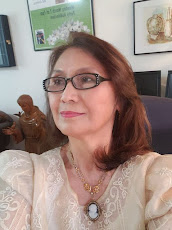

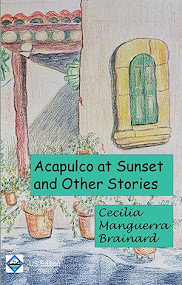



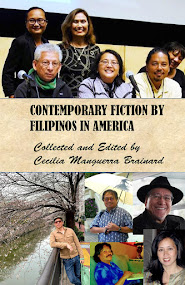
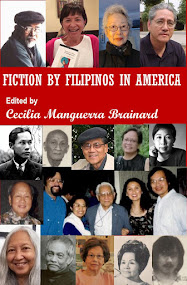



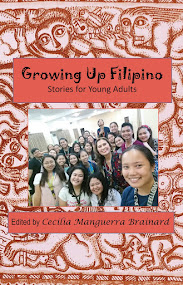
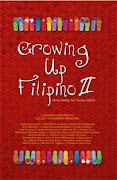


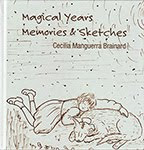


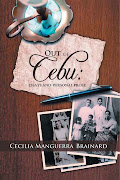



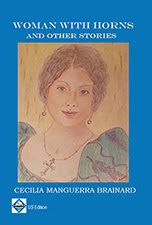

1 comment:
I don't particularly like this essay. But somehow I like the IDEA that it is written. The act of writing it somehow presents a gesture that writers in the Philippines are differentiating themselves from writers who are from the Philippines but now living in other countries, making these countries home; this can be a tough distinction, especially among Filipinos and Filipino Americans. The essay - whether it's badly written or not - defends notions of authenticity on writing about the Philippines, that somehow only those who both live simultaneously in the Philippines as place and Philippines as imagination can write something authentic about the Philippines. And this is where Yu's arguments become dangerous, because she somehow cannot empathize with the melancholy in memory among hyphenated Filipinos, or among exiles around the world, in general. And so her tone ends up being accusative and, to many extents, irritating. There's a distinct tone of irritation in the essay that Filipino American writers are painting a picture of the Philippines that exoticizes the Philippines, an image that the West (and the globe) swallows as the official image of the Philippines, because large publishing houses who are publishing these novels are in the U.S.
I don't think Brainard and Hagedorn's novels represent an official image of the Philippines, in the context of the North American imagination or elsewhere, but rather present significant examples out of a multitude of images. This, I think, is what Yu misses. Perhaps because Brainard and Hagedorn are widely read in the Philippines means they're also widely read in the U.S.; not quite. But even if Brainard and Hagedorn draw images of the Philippines that may not be nice for many to see and think, readers, I think, are wise enough not to dwell on those images, because they know the Philippines is much more complex than what is portrayed in any novel or narrative. Unless, of course if a reader has a sophomoric imagination and cannot move beyond certain confines, then you end up with reactionary essays like Yu's, which is unfortunate, because she has a Ph D.
Post a Comment